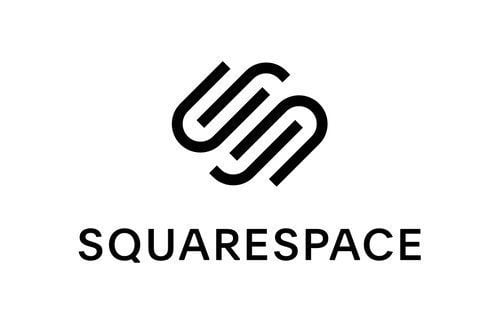
The pharmaceutical industry is at the forefront of safeguarding public health, and with that responsibility comes the need for stringent supply chain control. Implementing effective track and trace systems is no longer optional; it is a must-have for ensuring product safety, preventing counterfeiting, and meeting regulatory requirements across global markets. Hence the anti counterfeit solutions play a very pivotal role in to enable pharma industry to tackle the menace of counterfeiting.
At the heart of these systems lies one often-underestimated element: labels. These unassuming components play a pivotal role in enhancing track and trace in the pharma industry. But how, exactly? Let’s explore.
Understanding Track and Trace in the Pharma Industry
Track and trace refers to the systems and processes that monitor every stage of a product’s journey through the supply chain, from manufacturing to the end consumer. For the pharmaceutical industry, where precision and trust are paramount, these systems are indispensable in tackling issues like counterfeit drugs, product recalls, and regulatory compliance.
But accurate tracking and tracing are only possible when every product is labelled correctly, uniquely, and securely. Labels are not just adhesive stickers; they are a fundamental part of delivering safety and quality assurance.
Why Anti-Counterfeit Labelling is Essential
Counterfeit pharmaceuticals have plagued the industry for decades. According to the World Health Organization, counterfeit drugs account for around 10% of all medicines in lower and middle-income countries, and the problem isn’t limited to these regions alone. Such drugs can have serious health consequences, erode trust between consumers and brands, and cost businesses billions annually.
This is where anticounterfeit labels and solutions come into play. Innovative labelling technologies, such as tamper-evident seals, holographic elements, or invisible security codes, make it easier to verify product authenticity. These labels act as the first line of defence against counterfeiters, providing manufacturers, distributors, and consumers with confidence in what they’re handling or consuming.
The Label’s Role in Pharmaceutical Track and Trace Systems
When integrated into track and trace systems for pharma packaging, labels act as a bridge that connects physical products with digital data. Here’s how they drive efficiency, security, and compliance in the pharmaceutical supply chain.
1. Unique Identification with Serialisation
Serialisation, the process of assigning a unique code to each product, relies heavily on labels. These codes, when printed on labels, enable products to be tracked in real-time, ensuring traceability through every stage of the supply chain.
This is critical in the event of issues such as contamination or recalls, as it allows specific batches to be identified and actioned without disrupting the entire supply chain.
2. Regulatory Compliance
Whether it’s the EU’s Falsified Medicines Directive (FMD) or the US Drug Supply Chain Security Act (DSCSA), regulations emphasise traceability as a way of combating fraud and ensuring patient safety. Labels must meet these stringent regulatory requirements while seamlessly integrating with track and trace systems.
3. Enhanced Supply Chain Transparency
By embedding digital technologies like QR codes, NFC tags, or RFID chips into labels, companies can generate real-time data for their track and trace systems. This level of transparency optimises logistics, improves inventory management, and ensures the right products are delivered to the right place, every time.
4. Anti-Counterfeit Solutions
Labelling that incorporates innovative anti-counterfeit solutions defends against fraud by adding layers of security. Hidden identifiers, UV markings, and forensic tags provide robust protection against tampering and imitation, empowering stakeholders to easily authenticate products throughout the supply chain.
Leveraging Technology for Smarter Labelling
Modern labels are more than just identifiers; they are smart tools that contribute to pharmaceutical track and trace systems. With advancements in technology, digital labelling solutions are evolving at a fast pace. Here’s a snapshot of the latest innovations revolutionising the landscape:
- Blockchain Integration: Blockchain technology ensures that every step of a product’s journey is securely recorded. When paired with labels containing QR codes or NFC tags, it enables tamper-proof, end-to-end supply chain traceability.
- RFID Tags: Radio-frequency identification (RFID) automates tracking, allowing multiple items to be scanned at once without requiring direct line-of-sight access. This speeds up operations while improving accuracy.
- Variable Data Printing (VDP): Tailored labelling through VDP allows for the inclusion of unique serial numbers, dynamic barcodes, or batch information, enhancing customisation and compliance in pharma packaging.
Building a Secure and Resilient Supply Chain
For supply chain managers, logistics professionals, and quality control teams, the challenge lies not just in adopting track and trace systems for pharma packaging but also in ensuring their proper implementation. Labels, as seemingly simple as they may appear, are integral to this process. They provide the physical link between the product and the digital data that drives traceability, regulatory compliance, and consumer confidence.
Elevate Your Track and Trace Game
The pharmaceutical industry’s future depends on its ability to innovate and adapt to increasing challenges. Labels, bolstered by anti-counterfeit solutions and the latest technologies, provide the foundation for a secure, efficient, and consumer-focused supply chain.
Are you ready to enhance your pharmaceutical track and trace systems? Invest in smarter labelling that works as a partner, not just an accessory, to your every operation.
Explore how cutting-edge labelling solutions can transform your operations today.








